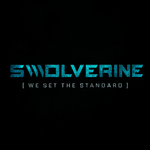If you’re dealing with chronic bloating, inflammation, irregular digestion, or unexplained fatigue, your gut may be the root of the problem. The gastrointestinal (GI) tract isn’t just responsible for breaking down food—it’s central to immune function, hormonal signaling, nutrient absorption, and even brain health.
When the gut lining becomes damaged or inflamed, conditions like leaky gut syndrome, IBS, gastritis, and chronic inflammation can take hold—leading to everything from digestive distress to poor recovery and reduced performance.
Unfortunately, most gut healing strategies rely on diet alone or generic supplements like probiotics and glutamine. While these can help, they often fall short for those with persistent gut issues, especially when tissue damage is involved.
That’s where BPC-157 comes in.
Originally derived from a protective protein found in the human stomach, BPC-157 (Body Protection Compound-157) is a synthetic peptide known for its gut-protective and regenerative properties. Unlike many supplements, it has demonstrated direct effects on the GI tract, including accelerated healing of ulcers, improved intestinal barrier integrity, and protection against NSAID damage.
“BPC-157 has shown consistent efficacy in healing gastrointestinal lesions, promoting angiogenesis, and stabilizing gut mucosal integrity across a wide range of animal models.”
— Sikiric, P. et al. Current Pharmaceutical Design, 2020
Whether you’re struggling with inflammatory bowel conditions, damage from medications, or chronic gut dysfunction, BPC-157 may offer a new path to targeted digestive healing—especially when other interventions have failed.
In this article, we’ll explore how BPC-157 works, what the science says about its gut-healing effects, and how to use it safely and effectively to support optimal digestive health.
What Is BPC-157 and How Does It Support Gut Repair?
BPC-157 is a synthetic peptide composed of 15 amino acids, derived from a protective protein found in gastric juice. Unlike hormones or immune modulators, it doesn’t manipulate broad systemic pathways—instead, it supports cellular repair, angiogenesis, and inflammation control at the site of injury. This makes it particularly effective in tissues like the stomach and intestines, which regenerate rapidly but are vulnerable to chemical, dietary, and inflammatory damage.
If you’re unfamiliar with its broader benefits, you can explore our complete breakdown here: What Is BPC-157? Benefits, Dosage, and How It Works for Recovery
Key Gut-Healing Mechanisms of BPC-157
Mucosal Protection
BPC-157 helps stabilize the mucosal barrier of the GI tract, which protects the underlying tissues from acid, pathogens, and inflammatory triggers. It promotes faster regeneration of epithelial cells that line the stomach and intestines.
“BPC-157 demonstrated protection against gastric and intestinal lesions induced by NSAIDs, alcohol, and stress, with enhanced epithelial regeneration.”
— Drmic, D. et al. Pharmacological Reports, 2018
Anti-Inflammatory Effects
It reduces levels of pro-inflammatory cytokines like TNF-α and IL-6 while modulating nitric oxide (NO) pathways that contribute to gut permeability and motility issues.
“BPC-157 modulates the inflammatory response and preserves endothelial function, which may play a key role in reducing intestinal permeability and systemic inflammation.”
— Perovic, D. et al. Molecules, 2020
Improved Gut Microcirculation
The peptide enhances angiogenesis—the formation of new capillaries—which is essential for delivering oxygen and nutrients to damaged gut tissue, especially in the presence of ulcers or IBD-related lesions.
“BPC-157 stimulated angiogenesis and improved vascular response in ischemic intestinal injury models.”
— Sikiric, P. et al. Journal of Physiology–Pharmacology, 2009
Enteric Nervous System Support
The enteric nervous system controls gut motility, secretion, and absorption. BPC-157 may help regulate neurotransmitter activity and support neural repair in cases of injury or dysfunction.
You can learn more about its systemic recovery benefits in our Ultimate Guide to a BPC-157 Cycle.
By influencing gut barrier integrity, vascular health, and inflammation levels, BPC-157 offers a targeted approach to repairing the gut lining—especially when conventional supplements like probiotics or glutamine fall short.
Clinical Evidence – BPC-157 and Gastrointestinal Healing
Although human trials are still lacking, the preclinical research on BPC-157 and gastrointestinal repair is extensive and remarkably consistent. Across dozens of animal studies, BPC-157 has demonstrated protective effects in a wide range of GI injuries—from ulcers to inflammatory bowel disease and drug-induced gut damage.
“BPC-157 has been shown to enhance healing of the gastrointestinal tract in nearly all models of damage, including NSAID toxicity, alcohol-induced ulcers, colitis, and anastomotic leakage.”
— Sikiric, P. et al. Current Pharmaceutical Design, 2020
NSAID and Alcohol-Induced Ulcers
Non-steroidal anti-inflammatory drugs (NSAIDs) are a common cause of stomach lining erosion, especially in active individuals and athletes. BPC-157 has been shown to prevent and reverse NSAID-induced ulcer formation in both the stomach and small intestine.
“In rat models, BPC-157 counteracted diclofenac-induced lesions and promoted mucosal healing through angiogenesis and epithelial regeneration.”
— Drmic, D. et al. Pharmacological Reports, 2018
It also shows promise in protecting against ethanol-induced damage, making it relevant for users struggling with dietary or lifestyle-related gut irritation.
Inflammatory Bowel Disease (IBD) and Colitis
In models of ulcerative colitis and Crohn’s-like inflammation, BPC-157 reduced symptoms such as:
-
Intestinal bleeding
-
Epithelial erosion
-
Immune cell infiltration
-
Weight loss and diarrhea
“BPC-157 therapy improved outcomes in acetic acid-induced colitis models, reducing oxidative stress and promoting mucosal regeneration.”
— Tkalcevic, V. et al. Journal of Physiology–Pharmacology, 2007
This positions BPC-157 as a potential adjunct therapy for individuals with autoimmune gut disorders—especially those who haven't responded to conventional medications.
Intestinal Anastomosis and Surgical Healing
Following GI surgery, complications such as anastomotic leakage and delayed healing are major risks. In rodent studies, BPC-157 improved the integrity of surgical joins in the bowel and accelerated healing—suggesting a possible application in post-operative gut repair.
“BPC-157 enhanced healing of the colon after anastomosis and significantly reduced the incidence of leakage and inflammation.”
— Sikiric, P. et al. Surgical Science, 2014
Gut–Brain Axis Support
Beyond local healing, BPC-157 may impact central and enteric nervous systems, improving motility, reducing visceral hypersensitivity, and supporting vagal tone.
To learn how this ties into broader systemic recovery, see Unlocking the Healing Power of BPC-157: Benefits, Uses, and Science Explained.
Together, these studies suggest that BPC-157 holds significant therapeutic potential for those suffering from functional or inflammatory GI disorders—offering both tissue repair and symptom relief where traditional options often fail.
Conditions BPC-157 May Help With
BPC-157’s effects on the gastrointestinal system aren’t limited to one specific condition. Its ability to protect and regenerate the mucosal lining, reduce inflammation, and improve local blood flow makes it relevant across a spectrum of digestive disorders and gut dysfunctions.
Here are the most common GI conditions where BPC-157 may offer support:
Leaky Gut Syndrome (Increased Intestinal Permeability)
Leaky gut, or intestinal hyperpermeability, occurs when the tight junctions in the gut lining become compromised—allowing bacteria, toxins, and undigested food particles to enter the bloodstream.
BPC-157 helps by:
-
Strengthening epithelial cell integrity
-
Reducing inflammatory cytokines
-
Supporting angiogenesis in damaged tissue
“BPC-157 preserved endothelial integrity and tight junctions in various GI injury models, restoring the intestinal barrier function.”
— Perovic, D. et al. Molecules, 2020
Irritable Bowel Syndrome (IBS)
IBS is marked by abnormal gut motility, inflammation, and hypersensitivity. While it’s a functional disorder without structural damage, BPC-157 may provide symptom relief by:
-
Modulating nitric oxide and serotonin activity
-
Reducing visceral pain and inflammation
-
Normalizing motility through enteric nervous system regulation
BPC-157’s neural and anti-inflammatory support makes it a candidate for addressing both the gut-brain axis and local irritation in IBS patients.
Gastric and Duodenal Ulcers
One of the most researched applications for BPC-157 is its ability to rapidly heal ulcers, especially those caused by NSAIDs, stress, alcohol, or Helicobacter pylori infection.
“BPC-157 accelerated healing in acetic acid-induced gastric ulcers, with reduced tissue necrosis and improved epithelial regeneration.”
— Drmic, D. et al. Pharmacological Reports, 2018
This makes it a valuable adjunct or alternative to proton pump inhibitors (PPIs), which suppress acid but do not repair tissue directly.
NSAID-Induced Gut Damage
Long-term NSAID use can erode the stomach lining and small intestine, leading to pain, bleeding, and poor nutrient absorption. BPC-157 has been shown to:
-
Counteract NSAID toxicity
-
Stimulate mucosal regeneration
-
Prevent intestinal bleeding and erosions
For athletes and active individuals who rely on NSAIDs, BPC-157 may offer a protective solution when used preventively or during recovery.
Inflammatory Bowel Disease (IBD): Crohn’s and Ulcerative Colitis
While not a cure, BPC-157 shows promise in managing flare-ups and accelerating recovery during periods of inflammation.
-
Reduces oxidative stress and immune activation
-
Promotes vascular repair in inflamed tissue
-
May help maintain remission alongside standard therapies
“BPC-157 therapy in colitis models improved mucosal appearance, weight retention, and reduced systemic inflammation markers.”
— Tkalcevic, V. et al. Journal of Physiology–Pharmacology, 2007
BPC-157 isn’t intended to replace medical treatment, but it may serve as a powerful adjunct for those seeking faster repair, fewer symptoms, and improved gut resilience—especially when conventional approaches fall short.
Dosing and Administration for Gut Healing
While BPC-157 is most commonly used via injection for musculoskeletal injuries, its unique origin from gastric proteins means it can also be taken orally—especially when targeting the gastrointestinal tract. Choosing the right form and dose depends on your symptoms, delivery preference, and whether you're dealing with local inflammation or systemic dysfunction.
Oral vs Injectable for Gut Healing
Both forms can be effective for gut repair, but there are key differences:
Oral BPC-157
-
Best for: Leaky gut, gastritis, ulcers, IBS, general inflammation
-
Dose: 250–500mcg, 1–2 times daily
-
How to take: On an empty stomach (30–60 min before food) for best absorption
-
Cycle length: 4–6 weeks for full mucosal repair
“Despite its peptide nature, BPC-157 remains active in the harsh gastric environment and effectively protects against ulceration when administered orally.”
— Drmic, D. et al. Pharmacological Reports, 2018
Injectable BPC-157
-
Best for: Severe IBD, post-surgical gut recovery, or systemic inflammation
-
Dose: 250–500mcg per day (subcutaneous, not near injury site)
-
How to inject: Use an insulin syringe for SubQ injection in the abdominal area
-
Cycle length: 2–4 weeks, with reassessment
While injections are more bioavailable, many users report effective gut symptom relief using oral capsules—especially when taken consistently.
You can explore a detailed breakdown of delivery formats here:
→ Best Forms of BPC‑157: Injectable vs Oral vs Capsules Explained
When to Dose
-
Morning: Helps regulate motility and inflammation during the day
-
Split dosing (AM + PM): Ideal for more severe symptoms or flares
-
Avoid taking immediately after large meals—absorption may be reduced
Suggested Protocol for Gut Healing
Mild to Moderate Gut Issues
-
Oral BPC-157: 250–500mcg once daily
-
Duration: 4 weeks
-
Support with: L-glutamine, collagen, digestive enzymes
Chronic or Severe GI Conditions
-
Oral + SubQ BPC-157: 250mcg each, daily
-
Duration: 4–6 weeks
-
Support with: Low-inflammatory diet, probiotics, stress management
To learn more about stacking for enhanced recovery, see:
→ The Best Peptides for Recovery
BPC-157 is flexible in its administration, but consistency is key. Whether taken orally or via injection, following a structured, time-limited protocol is the best way to reduce symptoms and rebuild gut lining integrity.
BPC-157 vs Other Gut Healing Strategies
BPC-157 stands out among gut healing tools thanks to its direct regenerative and anti-inflammatory effects. But how does it compare to more traditional strategies like glutamine, probiotics, or collagen? While these approaches offer valuable support, they often work best in complement with BPC-157, not as replacements.
Glutamine
What it does:
L-glutamine is a conditionally essential amino acid that fuels enterocytes (intestinal cells) and supports mucosal regeneration.
Limitations:
-
Helps maintain gut integrity but doesn’t actively repair damaged tissue
-
Less effective in cases of moderate to severe inflammation or ulceration
BPC-157 advantage:
-
Promotes angiogenesis, tight junction integrity, and full mucosal remodeling
-
Better suited for injury recovery and inflammation-driven gut issues
Probiotics
What they do:
Probiotics help balance the gut microbiome and support immune and digestive function. For foundational gut support, Swolverine’s Probiotix™ delivers 30 billion CFU across multiple clinically backed strains to help repopulate beneficial bacteria.
Limitations:
-
Do not repair the physical structure of the gut lining
-
Results can be strain-specific and influenced heavily by diet, stress, and medication use
BPC-157 advantage:
-
Repairs and protects the intestinal wall itself, creating a better environment for probiotics to thrive
-
Can reduce inflammation and support microbiome balance more effectively when used in tandem
Collagen, Bone Broth, and Gelatin
What they do:
Rich in glycine and proline, collagen supports tissue structure, gut barrier integrity, and skin elasticity. Swolverine’s Collagen Protein provides hydrolyzed grass-fed collagen peptides to aid in structural repair.
Limitations:
-
Passive structural support—doesn’t trigger healing pathways
-
Works slowly and requires long-term use for significant changes
BPC-157 advantage:
-
Stimulates active regeneration of gut lining and vascular tissue
-
Collagen works best when paired with BPC-157 to supply the building blocks for healing
Prescription Therapies (PPIs, Antispasmodics, Biologics)
What they do:
Manage symptoms like acid reflux, cramping, or immune flares. These are often essential for IBD and GERD patients.
Limitations:
-
Do not promote true tissue healing
-
Long-term side effects include nutrient malabsorption, dependency, and microbiome disruption
BPC-157 advantage:
-
Promotes healing at the root level—restoring the epithelial lining and improving motility and blood flow
-
Can be used to complement medical therapy, especially during flare recovery or post-surgery
When to Use BPC-157
Consider adding BPC-157 to your gut healing protocol if:
-
You're not improving with diet, probiotics, or supplements alone
-
You’re recovering from gut injury, surgery, or NSAID-related damage
-
You need faster healing for leaky gut, ulcers, or chronic inflammation
Used correctly, BPC-157 bridges the gap between symptom management and true regenerative repair—especially when combined with foundational gut health support like Probiotix™ and Collagen Protein.
Potential Risks and Considerations
While BPC-157 shows enormous promise for gut healing, it’s important to understand the potential risks—especially since it’s not an FDA-approved treatment and lacks large-scale human trials. Most of what we know about BPC-157’s safety comes from animal studies and anecdotal use, which, while encouraging, do not replace formal clinical validation.
Lack of Human Data
One of the main concerns with BPC-157 is the absence of long-term safety data in humans. Most studies have been conducted in rodent models, and while results are overwhelmingly positive, we can’t yet predict how chronic or high-dose use will affect humans over time.
“Although BPC-157 displays a high safety margin in animal models, controlled human studies are needed to confirm its efficacy and long-term tolerability.”
— Sikiric, P. et al. Current Pharmaceutical Design, 2020
Product Quality and Source Variability
Because BPC-157 is often sold as a research chemical, there’s wide variation in product quality between vendors. Poor-quality peptides may contain:
-
Contaminants or bacterial endotoxins
-
Inaccurate peptide sequences
-
Insufficient sterility or improper storage conditions
To reduce risk, only purchase BPC-157 from reputable peptide manufacturers that provide third-party testing and certificates of analysis (COAs).
Improper Dosing and Administration
Even high-quality peptides can cause problems when dosed incorrectly. Some users experience side effects like:
-
Nausea or dizziness
-
Headaches
-
Fatigue
-
Local irritation with injections
These are typically mild and dose-dependent. Oral BPC-157 tends to be well tolerated, but excessive or inconsistent use can blunt its effects or introduce unwanted symptoms.
For a breakdown of common side effects and how to avoid them, visit:
→ BPC-157 Side Effects and Safety: What You Need to Know Before Starting
Medical Oversight Is Advised
If you have a diagnosed GI condition like Crohn’s disease, ulcerative colitis, or chronic gastritis, consult your physician before starting BPC-157. While this peptide may complement your existing treatment plan, it should never replace evidence-based care or be used without monitoring.
In short: BPC-157 appears safe when used responsibly, but due diligence with dosing, sourcing, and timing is essential—especially when addressing complex GI disorders.
FAQs About BPC-157 and Gut Health
If you're considering BPC-157 for gut healing, you're not alone—it's one of the most talked-about peptides for addressing chronic digestive issues. Here are answers to the most frequently asked questions from those exploring BPC-157 for conditions like IBS, leaky gut, and ulcers.
Can I Take BPC-157 With Food?
For oral BPC-157, it's best to take it on an empty stomach, ideally 30–60 minutes before meals. This may improve absorption and minimize peptide degradation during digestion. If you're using injectable BPC-157, food timing is not a concern.
How Long Before I Notice Results?
Many users report improvements in gut symptoms—such as reduced bloating, cramping, or urgency—within the first 7–10 days. More significant tissue healing, especially for ulcers or chronic inflammation, may take 3–6 weeks of consistent dosing.
“Preclinical studies suggest that BPC-157 promotes epithelial regeneration within days, with continued improvement over several weeks.”
— Drmic, D. et al. Pharmacological Reports, 2018
Is Oral Dosing Enough for Gut Repair?
Yes—for gut-specific issues, oral administration is both effective and well-supported in animal models. BPC-157’s origin in gastric juice allows it to remain stable and active in the acidic environment of the stomach.
That said, injectable forms may be more effective for systemic inflammation or complex cases involving both GI and musculoskeletal symptoms.
To compare both options, see:
→ Best Forms of BPC‑157: Injectable vs Oral vs Capsules Explained
Can I Take BPC-157 Alongside Other Supplements?
Yes—and in fact, it often works better when combined with a gut support stack. Consider pairing it with:
-
Probiotix™ to balance the microbiome
-
Collagen Protein to support structural repair
-
L-glutamine, omega-3s, and digestive enzymes for additional support
Stacking helps nourish and rebuild the gut from multiple angles, especially in cases of long-term dysfunction or inflammatory conditions.
Will It Help With Gas, Bloating, or Food Sensitivities?
It might—particularly if these symptoms are rooted in intestinal inflammation or barrier dysfunction. While BPC-157 isn’t a direct treatment for SIBO or food intolerances, it can support mucosal healing, reduce immune hyperreactivity, and promote a more balanced environment for digestion.
Do I Need to Cycle BPC-157 for Gut Healing?
Yes. For gut-specific protocols, a cycle of 4–6 weeks is usually sufficient, followed by a 2–4 week break. Chronic use isn't necessary and may offer diminishing returns. If symptoms return, you can consider a second round with medical guidance.
For full dosage recommendations, see:
→ BPC-157 Dosage Guide: How Much Should You Take for Recovery and Injury Healing
Conclusion – Should You Use BPC-157 for Gut Healing?
If you're dealing with persistent gut issues—whether it's leaky gut, IBS, ulcers, or inflammation from IBD—BPC-157 may be a powerful tool to accelerate healing where other strategies fall short. Unlike conventional supplements that offer indirect or surface-level relief, BPC-157 works directly at the site of damage by repairing the gut lining, restoring blood flow, and calming inflammation.
Preclinical evidence supports BPC-157’s ability to:
-
Heal gastric and intestinal ulcers
-
Restore tight junction integrity in leaky gut models
-
Protect against NSAID- and alcohol-induced GI damage
-
Modulate inflammatory responses in colitis and Crohn’s
-
Support microvascular circulation and enteric nerve health
“Across nearly all models of gastrointestinal injury, BPC-157 promoted effective healing without toxicity, making it one of the most promising peptides for gut repair.”
— Sikiric, P. et al. Current Pharmaceutical Design, 2020
That said, BPC-157 works best when used as part of a comprehensive gut healing protocol. For optimal results, combine it with foundational support that targets both structure and function:
-
Probiotix™ – to restore beneficial bacteria and microbiome balance
-
Collagen Protein – to supply amino acids for tissue regeneration
-
L-Glutamine – to fuel intestinal cells and strengthen gut lining integrity
These staples complement BPC-157’s regenerative effects, especially when paired with an anti-inflammatory diet, stress reduction, and consistent sleep.
To get started with a dosing strategy tailored to digestive health, read:
→ BPC-157 Dosage Guide: How Much Should You Take for Recovery and Injury Healing
And for multi-pathway recovery options, explore:
→ The Best Peptides for Recovery: BPC-157, TB500, MK-677, Ipamorelin, CJC-1295, and More
Used with intention, BPC-157 can help repair the gut from the inside out—offering real progress for those who are ready to move beyond symptom management and finally heal.







